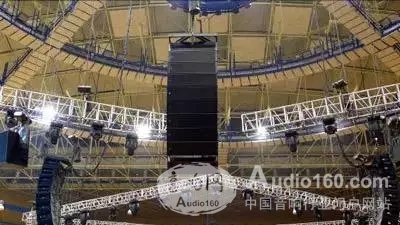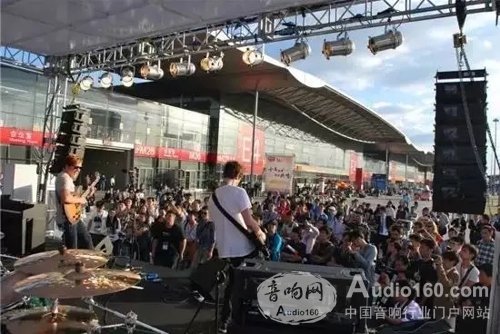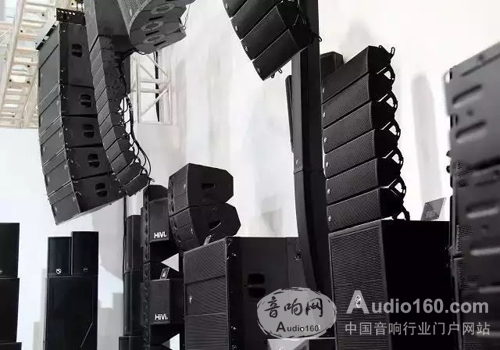In the audio industry, many audio companies are actively demonstrating the line-up system of their own or their own agents. When evaluating these line-array systems, do you know what standards to use? Let's take a look at "the correct listening pose of the line array."
First, the ability to play far-distance speaker system "to fight far" is to pass the original sound signal to ensure the ability to deliver the last row of audience areas without distortion and accuracy.
Generally speaking, the use of the line array is outdoor, and even if it is not outdoor, at least it has to face a large listening environment. This is also the main reason why many projects choose line arrays.
Inspection Method:
Stand at the farthest point of the venue from the speaker, and feel the sound is still "in front of (in front of)" feeling.
“Tang Yuan†can be heard completely. If you feel that you have lost your speech intelligibility (low intelligibility) when you walk away from the speaker, such a system can’t be far away. Degree (intelligibility) is another concept that is very important and is completely different from or equivalent to "sound pressure level".
What needs to be noticed here is the treble. If the treble is not far away, it will fail. Everyone knows that the wavelengths of high frequency and ultra high frequency are very short, and the absorption of high frequency by air is also very fast, which leads to outdoor sound reinforcement. This is a natural phenomenon. Therefore, large-scale sound reinforcement and long-distance sound reinforcement naturally need to solve high frequency. Distance transfer problem. This is very important for the selection of high frequency horns and the overall coupling between the cabinet modules. If the far-field audience can only serve the audience in the midfield and near-field, and the audience who can't serve the far-field can hear the same sound quality, then the audience in the backcourt basically only has the intermediate frequency, the low-medium and the ultra-low frequency, so the frequency characteristics before and after are not uniform. Coverage, this is definitely a failure!

2. Does the frequency response curve of a straight frequency sound system or speaker product require straightness? Many people argue on this issue, and the focus of the debate is often: good is not necessarily straight, and straight is not necessarily good. The actual situation is also true, but the quality of the sound has a very obvious subjectivity, you feel good, others may not think. But the audition field of the online array, the straight frequency response is indeed certain, as said before, the line array usually faces a wider listening environment, regardless of the audience at that position, at least the sound they hear. This is not much different.
Therefore, the line array that sounds well is required to have a flat frequency response and coverage regardless of the near, medium, and far fields of the venue. Always changing the frequency response of the IF/HF indicates poor coupling in the vertical plane.
Inspection Method:
You can listen to the performance of the sound while walking from the near field to the far field.
Third, the horizontal direction of the covering high frequency dissipation is faster, far-sighted high frequency, horizontal coverage also depends on high frequency. In fact, the horizontal coverage angle of the high frequency can be said to be the horizontal coverage angle of the system. The higher the frequency, the sharper the pointing, and the more difficult it is to process into a wider angle.

Inspection Method:
During the walk from left to right in front of the array, listen to whether the sound has a “before (in front of the eyes)†feeling everywhere, and feel the “language clarity (intelligibility) of the system at the maximum expansion angle†After the maximum angle, the sound should have a "roll-off" feeling, just like the "roll-off" similar to the frequency response curve. The actual sense of hearing and the parameters on the paper of most arrays are not good, and the paper is generally "pretty", but the reality is far from it.
Fourth, interference with conventional speaker combinations will definitely talk about sound interference. Although the line array reduces the interference when the speaker stacks, it is inevitable to face this problem, because the line array has always been a combination of many branches. Therefore, if the acoustic interference is not well solved, a strong tree-like filtering effect and other sound quality deterioration phenomenon will occur, and the appearance of the acoustic dyeing cannot be debugged and corrected using the equalizer and the phase. Therefore, the middle and high frequency have serious acoustic interference, and the line array must fail.

5. MF/HF direct sound will never have MF/HF direct sound under the array. Any MF/HF sounds that appear in the lower area of ​​the array would be highly undesirable, and in these lower areas you will hear these poorly coupled "edge" sounds (on the vertical plane, the "edge" sound is above the array and Below; however, on a horizontal plane, these "edge" sounds are really at the edge of the array). The same amount of energy is bounced down and bounced up to the ceiling.
Inspection Method:
Stand under the array to listen to the sound. The IF/HF sounds that are communicated to the audience should be sounds that are only reflected from the room.
Other attention issues:
Horizontal and vertical angle control is also not successful. The line arrays are all vertically hanged, so the high-frequency part of the vertical angle control is based on the high-frequency horn and the overall precision seamless coupling, while the intermediate frequency and low frequency (coupling is a very complicated thing, the frequency is different coupling characteristics Different, the frequency is very wide, which is summarized by the high, medium and low frequency segments.) It is achieved by direct coupling between the speaker units. The more modules, the smaller the vertical angle, but the horizontal angle coverage is another Once you have learned, it depends on the key to your cabinet design.
We certainly hope that the horizontal angle of the line array is as large as possible, but this is not possible, but it must be accurately covered in a relatively wide range. Generally, a good line array can achieve between 90-110 degrees. Level coverage. The horizontal and vertical angles are evenly covered, so that the audience can enjoy the same frequency characteristics fairly. This can't be done, which is contrary to the original intention of the large-line listening environment.
Vacuum Cleaner Ac Dry-Wet Motor
Vacuum Cleaner Ac Dry-Wet Motor,Vacuum Electric Cleaner Ac Motor,Wet Dry Vacuum Cleaner Motor,Wet And Dry Vacuum Cleaner Motor
Zhoushan Chenguang Electric Appliance Co., Ltd. , https://www.vacuum-cleaner-motors.com